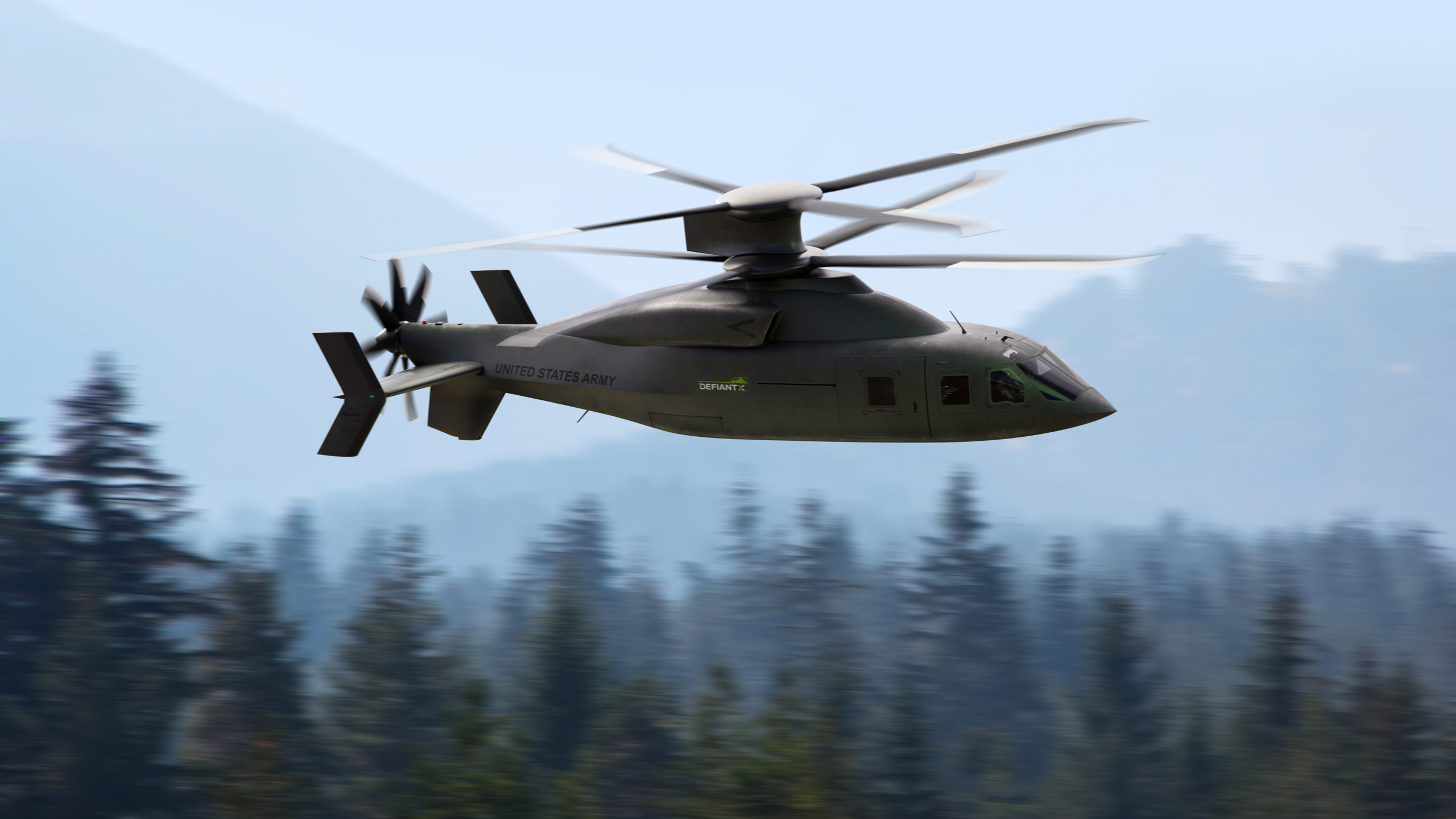
The Lockheed Martin Sikorsky-Boeing team recently successfully demonstrated the capabilities of the SB-1 Defiant X weapon system – a technology demonstrator designed to fly low and fast through complex terrain. SB-1 Defiant is a compound, co-axial helicopter that derives most of its forward thrust from a tail-mounted propeller, and is taking part in the U.S. Army’s Future Long-Range Assault Aircraft (FLRAA) competition. FLRAA’s mission is to provide agility at the objective and increased survivability, along with reducing pilot workload.
In the test flight, the Defiant reached a speed of 236 knots (437 km/h) in level flight, then reduced thrust on the propulsor to rapidly decelerate to a confined and unimproved landing zone. The Defiant also carried out a series of 60-degree banked turns, demonstrated mission-relevant cargo capacity by lifting a 5,300-pound (~ 2404 kilos) Guided Multiple Launch Rocket System external load, and also demonstrated Level 1 low-speed agility with fly-by-wire controls.
“This type of level body deceleration allowed us to maintain situational awareness and view the landing zone throughout the approach and landing without the typical nose-up helicopter deceleration. This confined area was extremely tight, requiring us to delay descent until nearly over the landing spot, followed by a near-vertical drop. We landed Defiant precisely on the objective with little effort as we descended into this narrow hole while maintaining clearance on all sides,” said Bill Fell, Defiant chief flight test pilot at Sikorsky.
The Defiant incorporates Sikorsky X Technology to operate at high speeds while maintaining low-speed handling qualities. This capability provides pilots with increased maneuverability and survivability in high-threat environments, allowing them to penetrate enemy defenses while reducing exposure to enemy fire.
“It’s what we call building combat power rapidly, and aircraft like the Defiant X can do that,” said Tony Crutchfield, vice president of Army Systems at Boeing. “In the Pacific, it’s even more important because your lines of operation are going to be dispersed over a wide area; you’re going to have these small bases and supply lines that’ll be positioned either on ships or on islands. You’re going to want to move more assets, maneuver in confined terrain, and survive to build that combat power faster than your adversary can – so you can win.”
